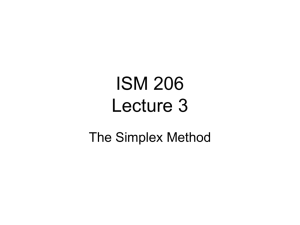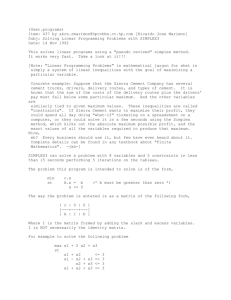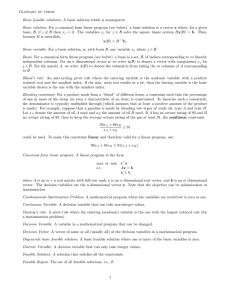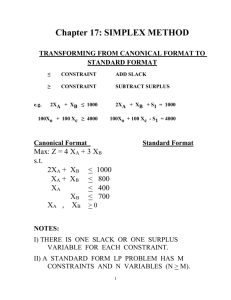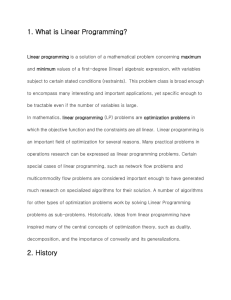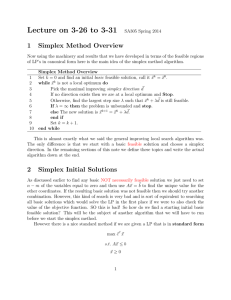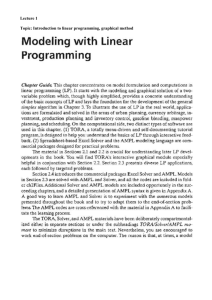Simplex Method: Linear Programming Optimization
advertisement
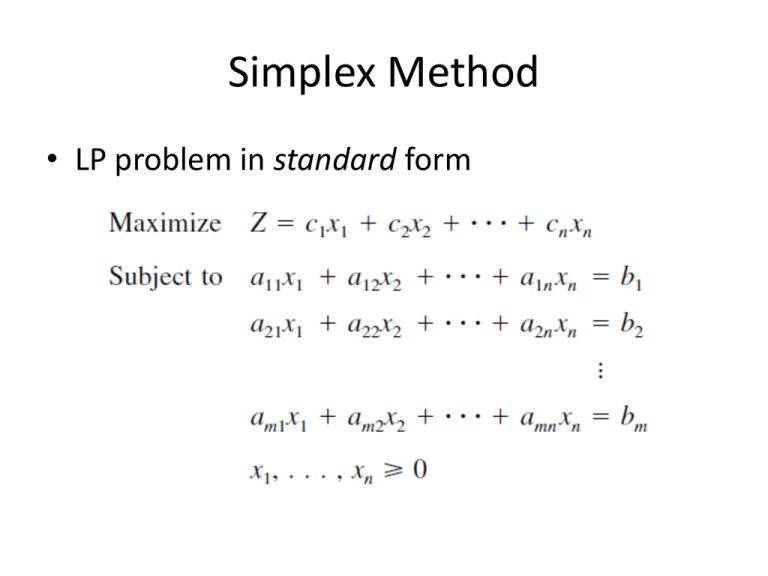
Simplex Method • LP problem in standard form Canonical (slack) form • B x1 , x2 ,...,xm : basic variables • N xm1 ,...,xn : nonbasic variables Some definitions • basic solution – solution obtained from canonical system by setting nonbasic variables to zero • basic feasible solution – a basic solution that is feasible n – at most m – One of such solutions yields optimum if it exists • Adjacent basic feasible solution – differs from the present basic feasible solution in exactly one basic variable • Pivot operation – a sequence of elementary row operations that generates an adjacent basic feasible solution • Optimality criterion – When every adjacent basic feasible solution has objective function value lower than the present solution Illustrative Example General steps of Simplex • 1. Start with an initial basic feasible solution • 2. Improve the initial solution if possible by finding an adjacent basic feasible solution with a better objective function value – It implicitly eliminates those basic feasible solutions whose objective functions values are worse and thereby a more efficient search • 3. When a basic feasible solution cannot be improved further, simplex terminates and return this optimal solution Simplex-cont. • Unbounded Optimum • Degeneracy and Cycling – A pivot operation leaves the objective value unchanged – Simplex cycles if the slack forms at two different iterations are identical • Initial basic feasible solution Interior Point Methods (Karmarkar’s algorithm) Interior Point Method vs. Simplex • Interior point method becomes competitive for very “large” problems – m n 10,000 • Certain special classes of problems have always been particularly difficult for the simplex method – e.g., highly degenerate problems (many different algebraic basic feasible solutions correspond to the same geometric extreme point) Computation Steps • 1. Find an interior point solution to begin the method – Interior points: x 0 | Ax b, x 0 0 0 • 2. Generate the next interior point with a lower objective function value – Centering: it is advantageous to select an interior point at the “center” of the feasible region – Steepest Descent Direction • 3. Test the new point for optimality T T – c x b w where b T w is the objective function of the dual problem


